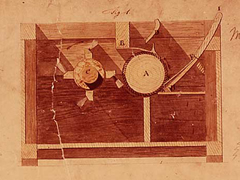Project Glass
The brave new world of augmented reality may be closer than you think. If it becomes a popular product, Google’s Project Glass may make touch-screen smart phones seem positively old-fashioned. This Huffington Post article describes this intriguing wearable technology, and the video gives you a sense of what it might feel like to spend time behind the lenses of smart glasses.
Category: Chapter 4 Software Basics: The Ghost in the Machine
Will Your Phone Read Your Mind in 2016? Ask IBM
asmarterplanet.com/blog/2011/12/the-next-5-in-5-our-forecast-of-five-innovations-that-will-alter-the-landscape-within-five-years.html
As noted in Chapter 1’s Inventing the Future, predicting the future isn’t easy. But when the predictions are backed by one of the world’s biggest technology innovators, they’re worth considering. In this short, clever video, IBM describes and illustrates “5 in 5″— five technological breakthroughs that could reshape our lives within five years.
Making the Cloud Clear
NPR.org/2011/12/26/143795017/now-hovering-above-us-all-the-cloud
If you’re not completely clear about “the cloud,” reading or listening to this short NPR story should help. Even if you understand the basics, you’ll probably be surprised by the many different ways that cloud technology is changing our world.
NPR.org/2011/12/26/144146395/the-touchy-feely-future-of-technology
A few years ago touch-screen devices were novelties; today they’re everywhere. Hundreds of millions of smart phones and tablets are profoundly changing the ways people interact with tools, the Internet, and each other. This excellent NPR report covers the evolution of touch technology. Segments examine unusual uses, social implications, and future applications of this rapidly-changing technology. The site includes both text and audio versions of the story.
Is software taking over the world? In this Wall Street Journal article, Mark Andreessen argues that it is taking over the economic world. Most of today’s business stars, are, at some level, software companies. His predictions about the future of global business and the American economy are worth thinking about.
Wrist communicators were popular in science fiction and comic strips decades ago. Are they going to take off in the real world soon? This Fast Company article speculates about what might happen when a wrist watch connects to a smart phone. Is this the next small thing?
Computer programs are designed using mathematical/logical constructs called algorithms. This fascinating TED talk by Kevin Slavin shows and tells how algorithms are finding their way into all kinds of unexpected places in our world, for better or for worse.
ted.com/talks/kevin_slavin_how_algorithms_shape_our_world.html
During his tenure as CEO of Apple, Steve Jobs had a profound impact on computers, the music industry, home entertainment, phones, and (most importantly) our day-to-day lives. He transformed Apple from a garage startup into the most valuable company in the world. When he announced his resignation as CEO, the press responded with many thoughtful articles about this iconic visionary, including these:
 Patents were originally designed to encourage creativity, but in the digital world they may be having the opposite effect. This engaging episode of public radio’s This American Life takes us inside the trenches of the intellectual property wars.
Patents were originally designed to encourage creativity, but in the digital world they may be having the opposite effect. This engaging episode of public radio’s This American Life takes us inside the trenches of the intellectual property wars.
Within the span of a few days, Microsoft and Apple demonstrated radically different successors to their current operating systems: Apple’s Lion (OS X 10.7), coming in July, and Microsoft’s Windows 8, due in 2012. Both are departures from traditional desktop OSs, borrowing concepts popularized on phones and tablets. This Wall Street Journal article discusses the different approach these two companies are taking.